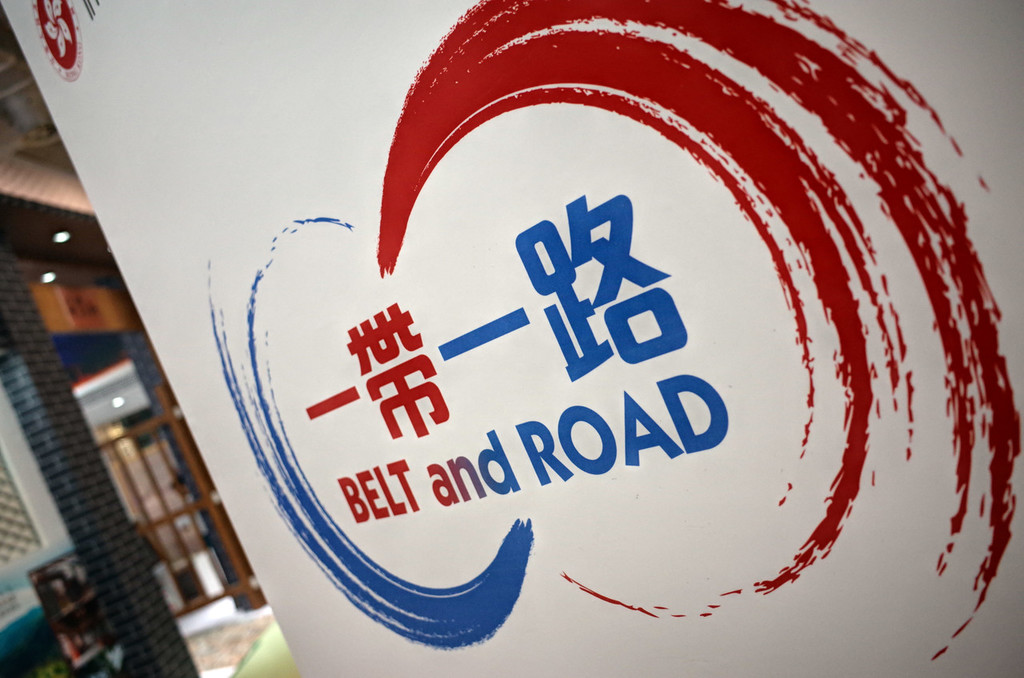Published: December 31,2023
By Liu Ying

[Photo/Xinhua]
Some Western media outlets keep spreading rumors that countries involved in the Belt and Road Initiative that need to repay loans to China are facing a “debt trap”, thus hyping up the “debt trap” theory.
The problem is that the media outlets highlight the debt burden of developing countries, but never talk about the debt burden of developed economies. The US government debt, for example, exceeds $33 trillion, with the government debt ratio exceeding 120 percent. The government debt ratios of economies such as Europe and Japan, too, are more than 100 percent.
Of late, the Western media have been claiming that Sri Lanka’s economy collapsed due to China’s “debt trap”. But the fact is that Sri Lanka faced an economic breakdown because it could not pay its high US dollar debt as the US Federal Reserve and other central banks hiked the interest rate.
Take the Puttalam Power Station in Sri Lanka for example. The power generated by this Chinese-built power station meets more than one-third of Sri Lanka’s electricity demand, benefiting more than 20 million people.
The vast majority of Sri Lanka’s debts are Western debts. Loans from China account for only a small part of them, with most of them being preferential loans with far lower interest rates than commercial loans. So there is no such thing as a China-created “debt trap” in Sri Lanka.
To analyze Sri Lanka’s debt problem, we have to first understand the relationship between debt and interest rate hike; and between debt and development, investment and consumption. An important reason for Sri Lanka’s debt problem is the appreciation of the US dollar due to the Fed’s interest rate hikes, with high interest rates pushing up the foreign debt levels of various countries. In fact, as early as the 1980s, the Fed’s rapid increase in interest rates caused 27 Latin American countries to suffer a debt crisis.
The percentage of Chinese loan in Sri Lanka’s total loan is very low. A report released by the Central Bank of Sri Lanka in 2017 showed the country’s total foreign debt was $51.8 billion, of which China-related debt accounted for only 10.6 percent, with the interest rates for 61 percent of them being far lower than international market interest rates.
The relationship between debt and development: To a certain extent, there is no development, especially fast-paced without funds. And the United States relies on debt for such funds.
The investments made through the Belt and Road Initiative in other countries are aimed at improving infrastructure including industrial parks, stimulating economic growth and promoting employment.
The Mombasa-Nairobi Railway, for instance, is not only boosting Kenya’s GDP by 2 percentage points, but also helping create 50,000 jobs in Kenya each year. In fact, the extension of the Mombasa-Nairobi Railway can also help solve the problems of neighboring countries going to sea and improve East Africa’s connectivity, and enhance Africa’s integration and modernization levels.
The Chinese people follow the philosophy of “not doing unto others as you would not have them do unto you”, and have no intention of creating debt traps for other countries. As a matter of fact, as a developing country, China has summed up its development experience and is determined that if it wants to get rich, it must first build roads, and raise funds, which is a very difficult task.
According to Asian Development Bank data in 2017, the annual infrastructure funding gap in Asia was $459 billion per year. The Silk Road Fund, which was established in 2014, has a total capital of $40 billion and 100 billion yuan.
China also initiated the creation of the $100 billion Asian Infrastructure Investment Bank with 109 active member states. Infrastructure and interconnectivity are the foundation of a country’s economic development. Without infrastructure, there will be no flow of people, money and materials. Without the flow of these things, nothing can be built. And to build, you need funds.
But developing countries, due to their weak economic foundations and low credit ratings, find it difficult to get low-interest loans. According to World Bank data, of the total foreign debt of $696 billion of 49 African countries, loans from non-Chinese multilateral financial institutions and private financial institutions account for three-fourths of the total, while the interest rate on loans taken from Western private institutions is more than twice that on Chinese loans.
China’s infrastructure projects not only attract investments, boost consumption and promote economic growth for the co-building countries, but also bring core function to the co-building countries.
In fact, the so-called debt trap theory has long been disproved by international professional research institutions and scholars.
By 2030, the joint construction of the Belt and Road Initiative will generate $1.6 trillion in global benefits every year. It will help 7.6 million people around the world emerge from poverty and 32 million people escape moderate poverty.
At the same time, China has taken measures to help developing countries address their debt problems, including but not limited to participating in the G20 debt reduction plan. The so-called debt trap is pure nonsense.
The author is with the Chongyang Institute for Financial Studies, Renmin University of China.
China Daily
 Africa -China Review Africa -China Cooperation and Transformation
Africa -China Review Africa -China Cooperation and Transformation
